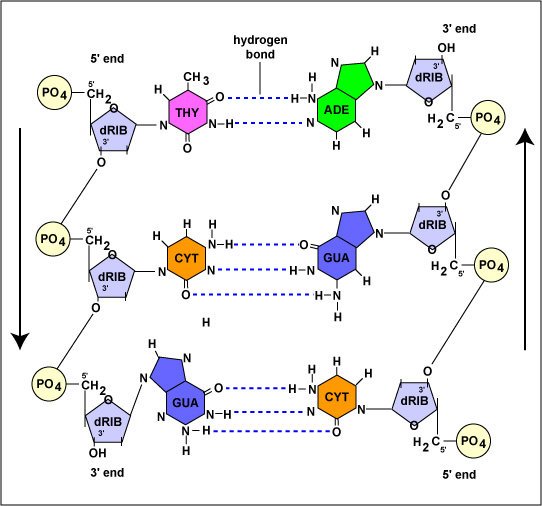
The phosphate of one deoxyribonucleotide binding to the 3' carbon of the deoxyribose of another forms the sugar-phosphate backbone of the DNA (the sides of the "ladder"). The hydrogen bonds between the complementary nucleotide bases (adenine-thymine; guanine-cytosine) form the rungs. Note the antiparallel nature of the DNA. One strand ends in a 5' phosphate and the other ends in a 3' hydroxyl.
Last updated: Feb., 2021
Please send comments and inquiries to Dr.
Gary Kaiser